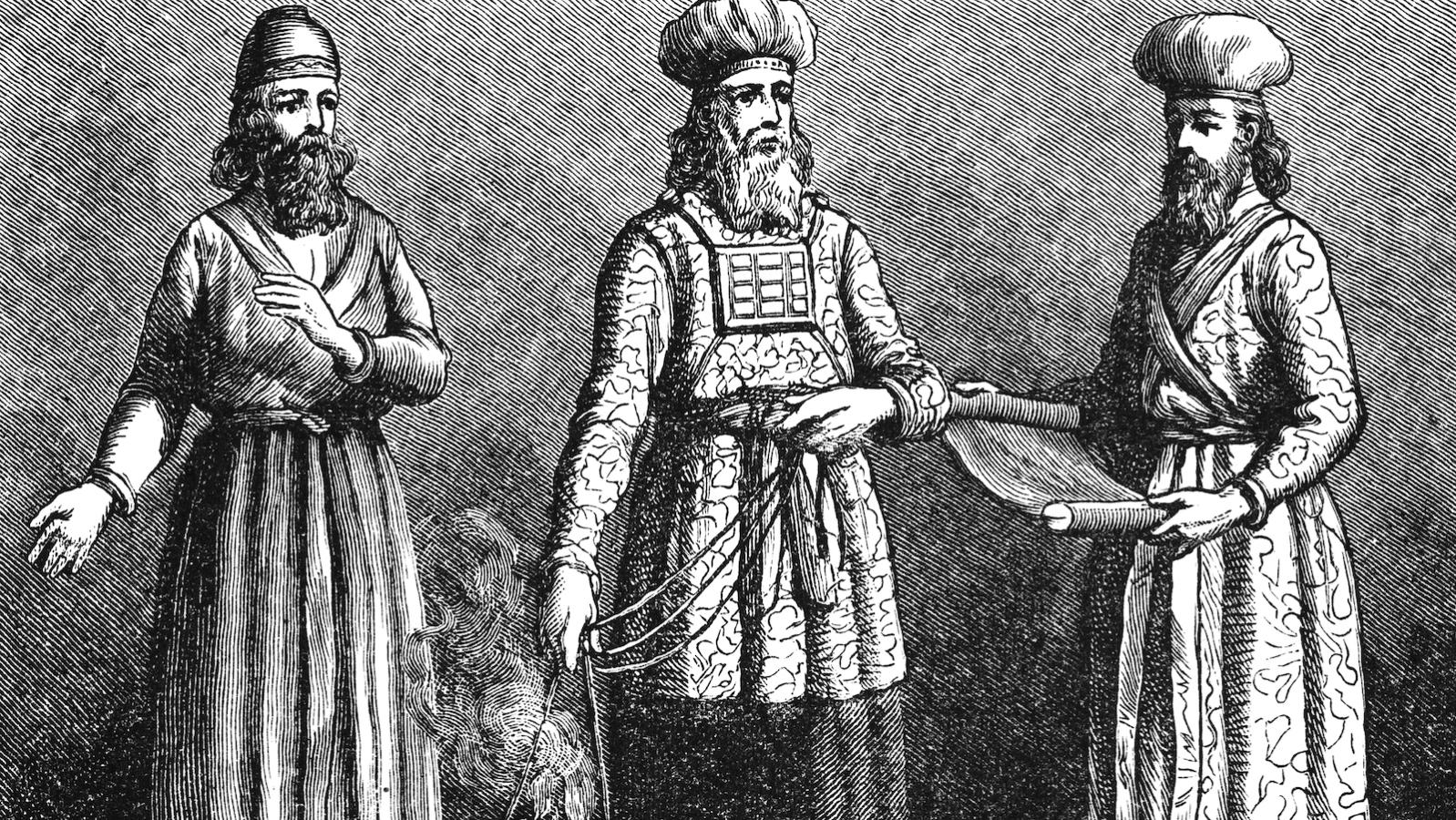Commentary on Parashat Tzav, Leviticus 6:1-8:36; Numbers 19:1-22
Traditionally, the Book of Vayikra (Leviticus) was known as Torat Kohanim, “the Teachings of the Priests.” Its contents are directed to people who would be ministering in the Temple in Jerusalem, and its topics pertain to priestly sacrifice, ritual and purity.
Yet, our tradition also holds that the eternal task of the Jewish People is to mold ourselves into a nation of priests, a holy people. In doing so, the standards that apply to a ‘kohen‘ (priest) in the Beit Ha-Mikdash (the Temple) are essential tools for elevating our own spiritual and ritual status as well. The same guidance that the Torah provided the ” at his task can ennoble and uplift the serious Jew of today as well.
In seeking to fulfill our divine mission, we turn to the very book that trained God’s servants in antiquity as well. At the outset of our commitment to become a nation of priests, we can look with special benefit to the ordination of the ‘kohanim‘ (priests) into their sacred service.
An Elaborate Ceremony
That installation took place amidst elaborate ceremony. The ‘kohanim’ washed themselves to become ritually pure, and then donned special clothing to demarcate themselves for their activity in the Temple. Anointed with a special oil, the ‘kohanim’ sacrificed a sin offering to atone for their own shortcomings and errors before attempting to intercede for the atonement of the people.
After sacrificing the ram of burnt offering, Moses took some blood from the ram of ordination, and “put it on the ridge of Aaron‘s right ear, and on the thumb of his right hand, and on the big toe of his right foot.” He then repeated that same ritual for each of Aaron’s sons. Finally, the remains of the animal were boiled and consumed by the newly-ordained ‘kohanim.’
That same ritual was repeated throughout seven complete days of celebration. Why was blood applied to those particular extremities–the right thumb, toe and ear? An ancient commentator, Philo (1st Century Egypt), perceived that, “The fully consecrated must be pure in words and actions and in life; for words are judged by hearing, the hand is the symbol of action, and the foot of the pilgrimage of life.” Thus, Philo reads specific meaning into each of the three body parts by analyzing the special function of each part in terms of their human use.
Our words, actions and life all must cultivate our highest potential of growth, expression and humanity. Rabbi Abraham ibn Ezra (12th Century, Spain) argues, on the other hand, that the ear “symbolizes that one must attend to what has been commanded” and the thumb “is the origin of all activity.”
Unlike Philo, ibn Ezra sees the two pivotal points as obedience to God’s ‘mitzvot‘ (commandments) and a commitment to a life of sacred deeds. While ibn Ezra provides different reasons than Philo, the two of them agree in reading metaphoric meaning into the details of the ritual (which body parts are used).
However, both sages ignore the requirement of spilling blood, and both fail to explain the entire ritual as an interrelated unit. Building on their insights, we can extend their vision by utilizing the methods and findings of the modern study of religion as well.
Blood As a Symbol
Blood is a symbol filled with ambivalent meaning. A symbol of life (recall the emblem of the Red Cross) and of death (think of the devil’s pitchfork), it is as a simultaneous expression of both realities–life and death–that blood becomes such a prominent symbol for moments and places of transition. At a child’s birth–with ‘brit milah‘ (circumcision), at the first Passover–when blood was smeared on the lintels of Jewish homes, blood marks the moment or the place as a transition between death and renewed life.
Here, too, by placing sacrificial blood on the priest’s extremities, the Torah indicates that the newly-ordained ‘kohen’ has passed through a transitional moment from being a private citizen to becoming a representative of God and a public leader. Ear, hand and foot–an abbreviated code for his entire body–emphasize that service to one’s highest ideals, to one’s people, or to one’s God, must be total.
Through his induction into the Temple ritual, he entered a higher state of purity, devotion and of service. To become a nation of priests requires of us no less.
Provided by the Ziegler School of Rabbinic Studies, which ordains Conservative rabbis at the American Jewish University.
Torah
Pronunced: TORE-uh, Origin: Hebrew, the Five Books of Moses.



